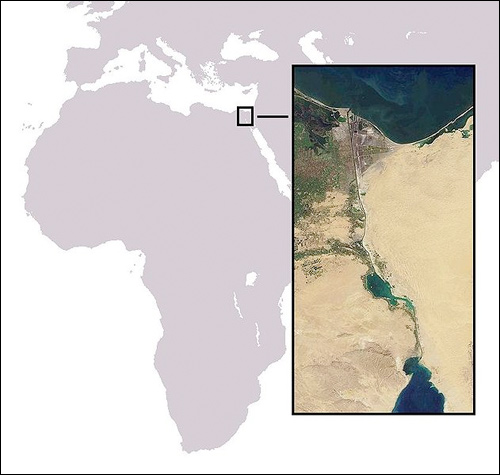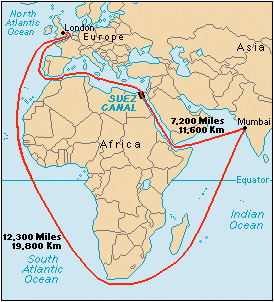 Source: Canal de Suez, YolanC, Wikimedia
Source: Canal de Suez, YolanC, Wikimedia
Do your teachers call you "The Great Houdini" because you have a tendency to disappear when your assignments are due? Well, imagine this, you've decided to change your ways and get your teachers off your back. You wrote your English paper last night but had to save it on a flash drive because you didn't have any black ink in your printer at home. (Of course you didn't have any black ink, you haven't used your printer since middle school.) You considered printing it in red, but you knew Miss Prissy Pants wouldn't go for it. So you've got your document on your flash drive, its lunch time, and your paper is due 5th period. You head on over to the library to print out your paper. Whaaaaat??!!! There he is, your chief nemesis, Mr. Allen. Mr. Allen, arms crossed, feet firmly planted, is blocking the entrance to the library. "You'll have to go around," he says, and he shakes his pin-like head in the direction of the doors to the gym. Seriously? Are you kidding me? Go around? The other entrance to the library is (deep breath) through the gym, through the little theater, outside through the senior parking lot, across the tennis courts, and on the other side of the quad! To make matters worse, you can see the library from where you're standing. If you "go around" you'll never make it. Do you see a referral for tardies in your future?? Maybe you should just skip 5th Period. (cough, cough)
There are "real world" places just like the blocked off entrance to the library and they're called chokepoints. A chokepoint is a narrow passageway where traffic is so heavy that movement of people and goods almost stops. When this happens, people usually start looking for another option or a way to "go around." The problem with "going around" is that sometimes it is such a major hassle or so expensive that people give up and go home. But, what if there was a way to make the passageway wider and deeper so more people could get through faster?!
In the 19th century, one of the major chokepoints in the world was the geographic area between the Mediterranean and Red Seas. Instead of traveling a relatively short distance between the two seas, ships had to go all the way around the Horn of Africa. This trip took days, weeks, or even months, depending on conditions.
Activity 1:
Hey, check out these maps to learn more about the area!
This map shows where the chokepoint is located and what it looks like today from a satellite. The area we're learning about is in Egypt, but the impact of this problem goes way beyond any one country.
 Source: Canal de Suez, YolanC, Wikimedia
Source: Canal de Suez, YolanC, Wikimedia
This map is an example of how far out of the way traders and shippers had to go to reach the Mediterranean Sea from the Red Sea. The Mediterranean Sea was the gateway to Europe and the Atlantic Ocean. The Red Sea was the gateway to profitable Indian Ocean trade routes. To "go around" Africa was expensive and took and very long time.
 Source: The Suez Canal, How Stuff Works
Source: The Suez Canal, How Stuff Works